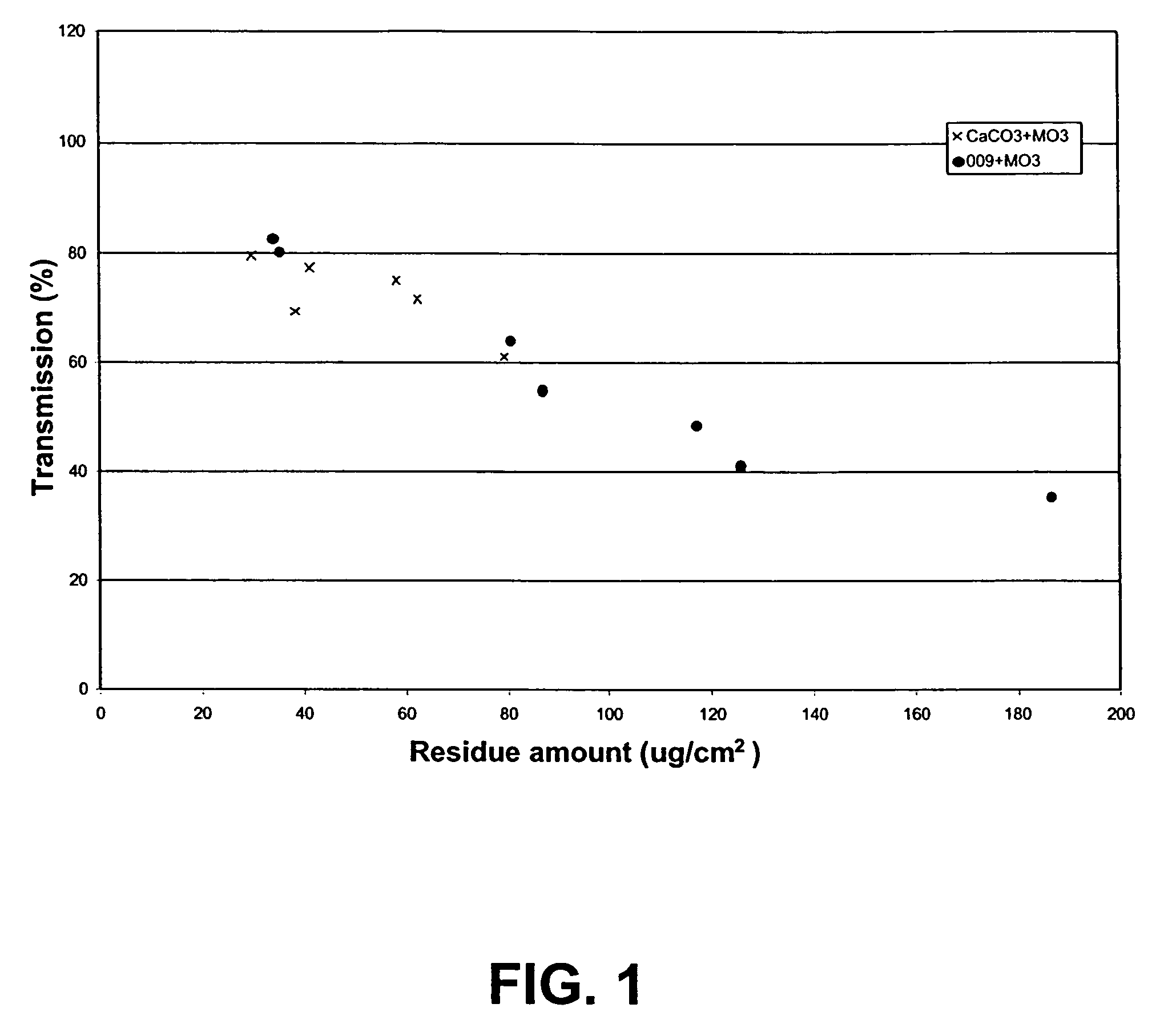Method for reducing freeze and chill damage in plants
- Summary
- Abstract
- Description
- Claims
- Application Information
AI Technical Summary
Benefits of technology
Problems solved by technology
Method used
Image
Examples
example 1
[0048]A suspension of calcium carbonate containing 0.5% surfactant MO3 and calcined kaolin containing 0.5% surfactant MO3 are applied to glass plates. Concentrations of 0.001% to 0.1% were applied to achieve a range of residues on the plates. Residue amounts are determined by weighing the plate with the residue and then removing the residue and re-weighing. Transmission of visible radiation (400-700 nm) through the residue is measured with a spectral radiometer. Transmission through an untreated glass plate is set at 100%. The results are reported in FIG. 1.
[0049]Increasing the residue decreased visible light transmission. Both materials had similar light blocking properties.
example 2
[0050]SURROUND® CF and SURROUND® WP (95% kaolin product from Engelhard Corp. Iselin, N.J.) were applied to Bartlett pear trees on 31 Mar. 2004 in a 6% suspension delivered in a volume equivalent to 100 gallons / acre. The trees were treated with an orchard sprayer. Four trees were treated for each treatment and 4 trees were left untreated. Flower counts were made on 31 Mar. 2004 to determine viability and 100% of flowers were viable. Two hundred fifty flowers / tree were evaluated by cutting the flowers longitudinally to examine the ovary. If the ovary was green, it was considered viable. If the ovary was brown or discolored, it was not viable. A frost (air temperature less than −1 C) occurred on the night of 31 Mar. 2004 and on Apr. 12, 2004 flowers were re-examined for viability. The untreated pear trees had 33.6% of the fruit buds damaged by the frost. The Surround CF and Surround WP treated trees had 16.2 and 21.1% of the fruit buds, respectively, damaged by the frost. The untreated...
PUM
 Login to View More
Login to View More Abstract
Description
Claims
Application Information
 Login to View More
Login to View More - Generate Ideas
- Intellectual Property
- Life Sciences
- Materials
- Tech Scout
- Unparalleled Data Quality
- Higher Quality Content
- 60% Fewer Hallucinations
Browse by: Latest US Patents, China's latest patents, Technical Efficacy Thesaurus, Application Domain, Technology Topic, Popular Technical Reports.
© 2025 PatSnap. All rights reserved.Legal|Privacy policy|Modern Slavery Act Transparency Statement|Sitemap|About US| Contact US: help@patsnap.com

